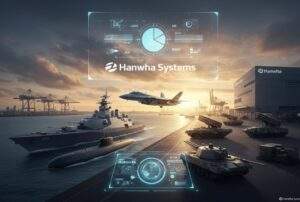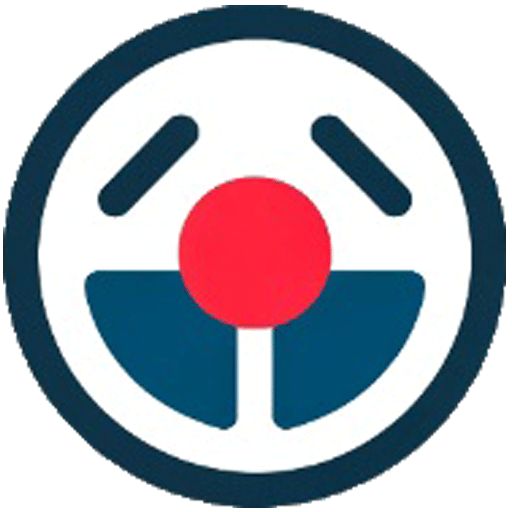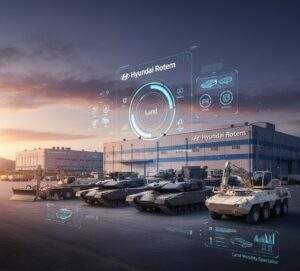To international observers, South Korea’s defense export boom appears to be a masterfully coordinated national effort. When Poland signed its framework agreements for $15 billion worth of K2 Black Panther tanks and K9 Thunder howitzers, global media outlets branded it a “Team Korea” victory.
This narrative, while convenient, obscures the most critical dynamic driving the sector’s explosive growth.
From a perspective in Seoul, “K-Defense” is not a monolith. It is the product of a fierce, high-stakes corporate rivalry between two industrial giants: Hanwha and Hyundai Rotem. This domestic competition, largely invisible to Western analysts, is the true engine behind K-Defense’s innovation, cost-competitiveness, and aggressive global strategy.
Understanding this battle for domestic dominance, political influence, and R&D funding is essential for any investor, policymaker, or defense professional seeking to understand what comes next.
Beyond ‘Team Korea’: Deconstructing the Domestic Competition
The ‘Team Korea’ Export Brand
The “Team Korea” branding is, without question, a powerful export tool. It is effectively managed by South Korea’s Defense Acquisition Program Administration (DAPA) to present a unified front, showcasing a complete catalog of interoperable, battle-proven systems to the world.
The View from Seoul: A Corporate Battleground
But on the ground in Seoul, the reality is far more complex. Hanwha and Hyundai Rotem are direct competitors. They compete for the same domestic procurement contracts, for state-allocated R&D funds, and for the top engineering talent graduating from Korea’s elite universities (KAIST, Seoul National University).
Local Korean financial and defense media do not report on these export wins as purely national triumphs. They are, first and foremost, shareholder-driven victories. A win for the K2 tank is a win for Hyundai Rotem’s stock price. A K9 howitzer contract is a monumental win for Hanwha Aerospace. This corporate rivalry, more than any state-led initiative, forces a relentless pace of innovation.
The Titans and Their Portfolios: A Tale of Two Strategies
The two firms represent fundamentally different, and increasingly clashing, corporate strategies.
Hyundai Rotem: The Land Mobility Specialist
As the defense arm of the gargantuan Hyundai Motor Group, Hyundai Rotem is a specialist. Its identity is forged in heavy land systems.
- Core Platforms: K2 Black Panther Main Battle Tank (MBT), K808 White Tiger Wheeled Armored Vehicle (WAV), and K600 Rhino Combat Engineer Vehicle (CEV).
- Corporate Strategy: Hyundai Rotem leverages the world-class manufacturing efficiency, R&D, and supply chain management of its parent company. Its strategy is one of deep specialization, aiming to be the world’s preeminent supplier of next-generation land mobility. Increasingly, this includes a heavy focus on unmanned ground vehicles (UGVs) and robotics, directly benefiting from the R&D of the wider Hyundai Group.
Hanwha Aerospace: The Integrated Defense Behemoth

Hanwha, one of Korea’s largest chaebols (family-controlled industrial conglomerates), has taken a different path: aggressive expansion and vertical integration.
- Core Platforms: K9 Thunder Self-Propelled Howitzer (SPH), Redback Infantry Fighting Vehicle (IFV), and the Chunmoo K239 Multiple Rocket Launcher System (MRLS).
- Corporate Strategy: Hanwha’s ambition is not just to be a land systems provider, but to become Korea’s all-domain “prime contractor,” mirroring the scale of US giants like Lockheed Martin or Northrop Grumman. This strategy has been executed through a series of high-profile acquisitions, consolidating various Hanwha defense subsidiaries into Hanwha Aerospace.
Hanwha’s Ambition: The Hanwha Ocean Acquisition
A Strategic Power Play for All-Domain Dominance
The most critical data point for understanding this rivalry is Hanwha’s 2023 acquisition of Daewoo Shipbuilding & Marine Engineering, now renamed Hanwha Ocean.
What analysts in Korea immediately noted was that this was far more than a simple M&A deal. It was a direct, strategic power play. By acquiring one of the world’s largest shipbuilders (capable of producing submarines, destroyers, and LNG carriers), Hanwha signaled its intent to become a full-spectrum provider:
- Land: Hanwha Aerospace (K9, Redback)
- Sea: Hanwha Ocean (KSS-III Submarines, KDDX Destroyers)
- Air & Space: Hanwha Systems (Avionics for the KF-21, advanced satellite and surveillance systems)
Isolating the Competition
From a Seoul-based perspective, this move created immense pressure. It directly challenges Hyundai Heavy Industries (a historic rival in shipbuilding) and, more strategically, it isolates Hyundai Rotem, which is now “only” a land systems specialist competing against Hanwha’s integrated “land-sea-air-space” portfolio.
DAPA’s Role: The Government as Referee and Promoter
Overseeing this corporate clash is the Defense Acquisition Program Administration (DAPA). DAPA’s role is a delicate balancing act.
Fostering Competition to Drive Innovation
First, DAPA acts as the promoter. DAPA is keenly aware that the Hanwha-Rotem rivalry is its greatest asset. It leverages this competition to drive down procurement costs for the Republic of Korea Armed Forces and to accelerate R&D timelines. By fostering a “survival of the fittest” environment, DAPA ensures the systems it offers for export are not just high-tech, but also price-competitive and rapidly developed.
Preventing “Destructive” Competition
Second, DAPA acts as the referee. It must also prevent “destructive” competition. Its 2024-2028 mid-term defense procurement plan is a clear example of this, carefully balancing contracts to maintain the health of both prime contractors. On major national projects, like the KF-21 Boramae fighter, DAPA forces collaboration, with KAI as the lead integrator and companies like Hanwha Systems providing critical subsystems.
The Battleground: How This Rivalry Impacts Global Exports
This domestic dynamic directly translates to the global stage.
Case Study 1: Poland’s ‘Strategic Truce’
The 2022 deal was a “Team Korea” triumph, but it’s better understood as a strategic truce. Both companies secured a massive foothold in Europe. The real competition begins now, as they compete for local production efficiencies, follow-on contracts, and future upgrades within Poland.
Case Study 2: Hanwha System’s Solo Victory in Australia
This was the opposite. Hanwha’s Redback IFV competed head-to-head with Rheinmetall’s Lynx, and won. This was a solo victory for Hanwha, a massive validation of its platform and corporate strategy. The win, widely celebrated in Seoul, significantly boosted Hanwha’s international credentials, giving it a key victory that Hyundai Rotem has yet to match on its own.
Future Contests: Romania, Saudi Arabia, and Beyond
For upcoming tenders in Romania, Saudi Arabia, and beyond, this rivalry will be front and center. Will Hanwha offer a “bundle” (K9s, Redbacks, and even naval systems)? Will Hyundai Rotem partner with a foreign provider or pitch its K2 as the single best-in-class MBT?
The Analyst’s Take: What Investors and Policymakers Are Missing
For policymakers and investors in Washington and Brussels, the key takeaway is this: K-Defense’s success is not a bug; it’s a feature of its hyper-competitive domestic market.
The Risk of Cannibalization
The greatest risk, a concern often voiced by DAPA officials, is cannibalization—a scenario where Hanwha and Hyundai Rotem find themselves in a head-to-head bidding war in a foreign country, driving down prices and profit margins for “Team Korea.”
The Engine of Success
But the opportunity presented by this rivalry far outweighs the risk. Unlike state-coddled, single-provider monopolies common in other nations, this competition has forged two efficient, innovative, and market-hardened corporations. They are forced to build better products, faster, and at a lower cost.
The Next Move: Rotem’s Response to Hanwha’s Gambit
Hanwha has made its all-domain play. It is building an integrated defense behemoth. What analysts in Korea are now watching is Hyundai Rotem’s response. Will it seek its own M&A to diversify into drones or other high-tech sectors? Or will it double down, leveraging its deep specialization and the backing of the world’s third-largest automaker to prove that the best-in-class specialist can still beat the all-domain generalist?
The answer will determine the next chapter of the K-Defense global expansion.
Hi, I’m [jeybee]. As a long-time resident of Seoul, I’m passionate about uncovering the authentic, everyday magic of Korea. This blog is my way of sharing my favorite spots, tips, and cultural insights with you, beyond the usual tourist traps.



